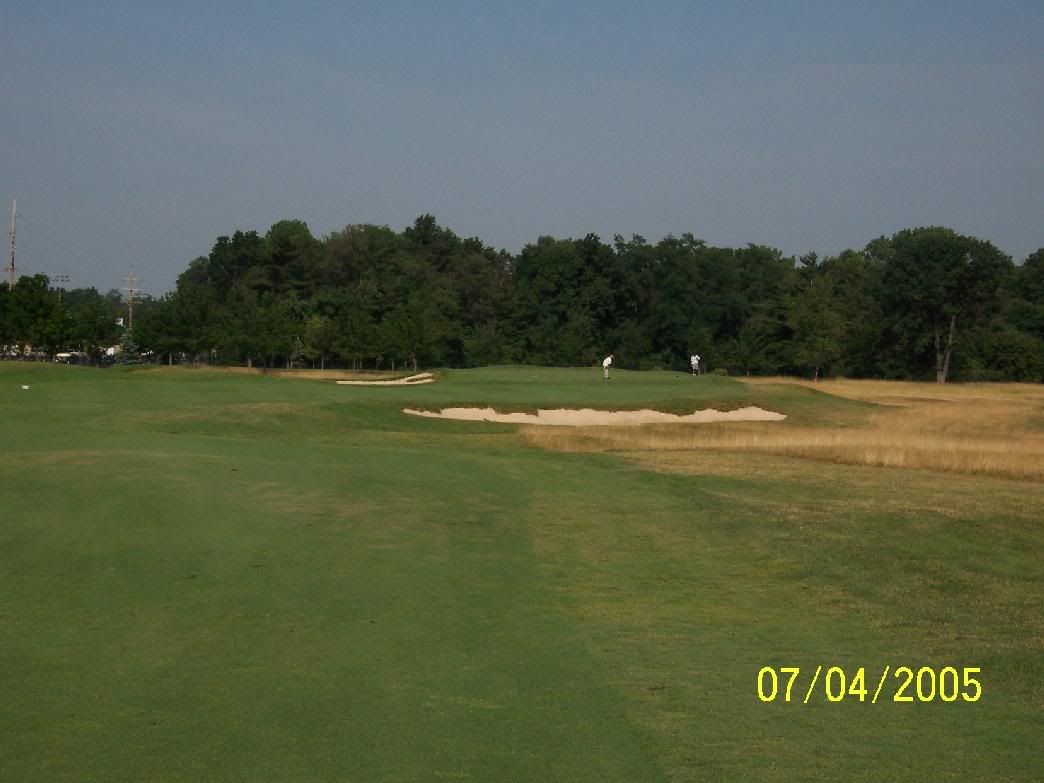Someone who was at Pat Mucci's Hidden Creek outing last
year told me something that Bill Coore said during his speech
regarding this issue. Bill said that when they put in "fescue
areas" such as described above, they seed them at 1/6th the
rate as 'normal' seeding. After hearing it, it seemed so
blindly 'obvious' to be brilliant. Cheaper to seed (and
maintain?) and a much higher chance of finding
and playing your ball, as you often see in the British Open. Also seems
like it would speed up play as well.
Might be fewer snakes, too, I don't know.
It certainly didn't surprise me to hear how they do it, since a
few wayward tee shots of mine were found and played from
the fescue areas at The Warren Course last year.
Happened to me on the right of #2:

and between #5 and #13 (on each hole, no less

)